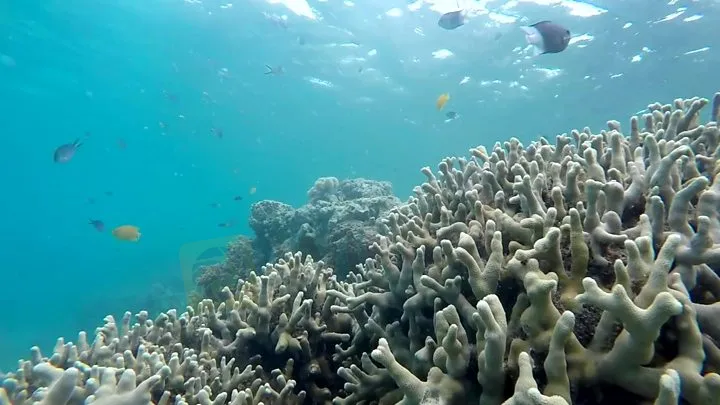简体中文
繁體中文
English
Pусский
日本語
ภาษาไทย
Tiếng Việt
Bahasa Indonesia
Español
हिन्दी
Filippiiniläinen
Français
Deutsch
Português
Türkçe
한국어
العربية
Australian floods send dirty water across Great Barrier Reef
Abstract:Image copyrightMATT CURNOCK/TROPWATER JCUImage caption The floodwaters have spread more than 60km (
Image copyrightMATT CURNOCK/TROPWATER JCUImage captio
The floodwaters have spread more than 60km (37 miles) offshore
Dirty water from a flood crisis in northern Australia has spread to parts of the Great Barrier Reef, placing it under stress, scientists say.
The floods are the result of weeks of devastating rain in Queensland.
Aerial pictures show that run-off from one river has blanketed some reef areas more than 60km (37 miles) from shore.
Scientists fear the sediment-laden waters may be blocking out light and effectively “smothering” coral. Tests are yet to be undertaken.
Queensland flood crisis: Two found dead
Crocodiles spotted in flooded street
The Great Barrier Reef, located in the Coral Sea off the coast of Queensland, is a diverse World Heritage site that spans an area of 344,400 sq km (133,000 sq mi).
In recent weeks, run-off from several rivers has coalesced to affect an approximately 600km stretch of the reef's outer edges, scientists say.
The water has not dispersed due to its size and a recent lack of wind.
Image copyrightMATT CURNOCK/TROPWATER JCUImage caption The run-off can contain pesticides which disrupt the balance of the coral reef ecosystem
“Generally a bit of wind and wave action can break the plumes up quite quickly, but we have literally had no wind so they're just sitting there hanging,” said Dr Frederieke Kroon from the Australian Institute of Marine Science.
She told the BBC that the nutrient-rich water had also sparked algae growth in some areas, turning waters “a thick blanket of green”.
Australia unveils reef protection pla
“The biggest concern at the moment is this reduced light - if it persists for much longer, in some cases we can actually see a smothering of the system,” said Jane Waterhouse, a scientist from James Cook University's TropWATER research unit.
However, she said strong winds - if they eventuated - could mitigate the impact.
The reef is already facing threats to its survival such as coral bleaching caused by warmer sea temperatures. Mass bleaching events occurred in 2016 and 2017.

Media playback is unsupported on your device
Media captionWarmer water has led to mass coral bleaching on the Great Barrier Reef
It has also been damaged by cyclones and crown-of thorns starfish.
Large parts of Queensland have been gripped by floods in recent weeks, after some regions experienced the equivalent of a year's rainfall in 10 days.
Last week, two people were found dead in floodwaters that inundated low-lying areas in the city of Townsville.

Media playback is unsupported on your device
Media captionFamilies in Townsville are evacuated
The UN calls the Great Barrier Reef the “most biodiverse” of all the World Heritage sites, and of “enormous scientific and intrinsic importance”.
Disclaimer:
The views in this article only represent the author's personal views, and do not constitute investment advice on this platform. This platform does not guarantee the accuracy, completeness and timeliness of the information in the article, and will not be liable for any loss caused by the use of or reliance on the information in the article.
WikiFX Broker
Latest News
Bitcoin in 2025: The Opportunities and Challenges Ahead
BI Apprehends Japanese Scam Leader in Manila
Join the Event & Level Up Your Forex Journey
Is There Still Opportunity as Gold Reaches 4-Week High?
Bitcoin miner\s claim to recover £600m in Newport tip thrown out
Good News Malaysia: Ready for 5% GDP Growth in 2025!
How to Automate Forex and Crypto Trading for Better Profits
FXCL Lucky Winter Festival Begins
Warning Against MarketsVox
Is the stronger dollar a threat to oil prices?
Currency Calculator






